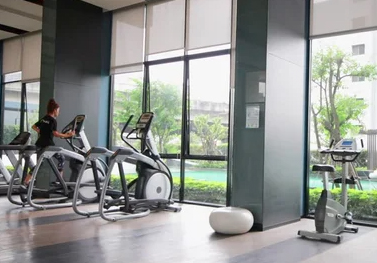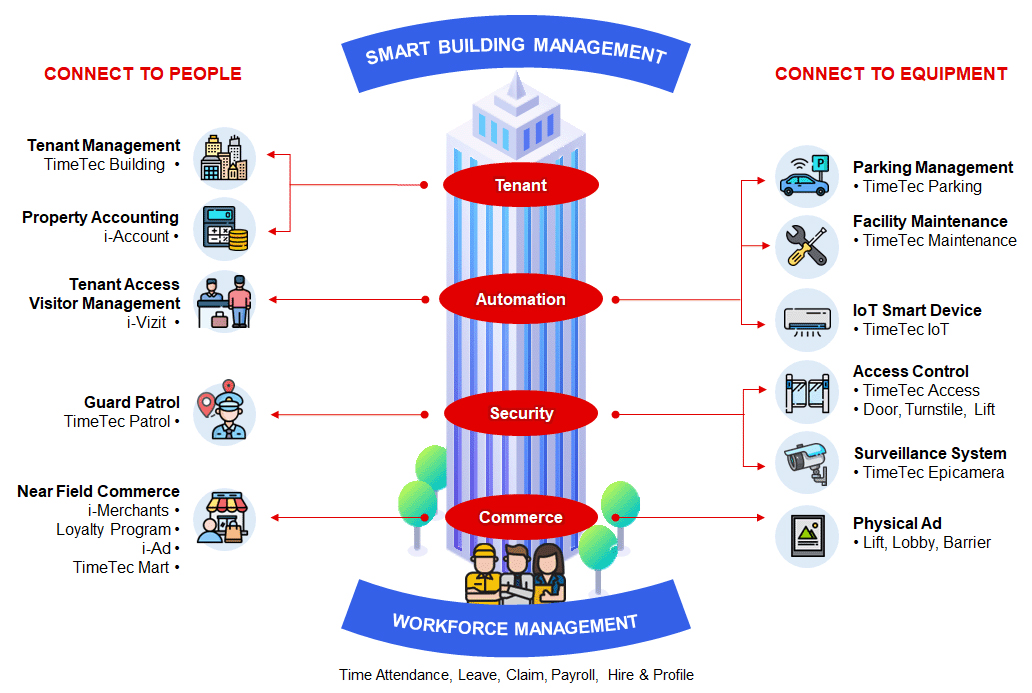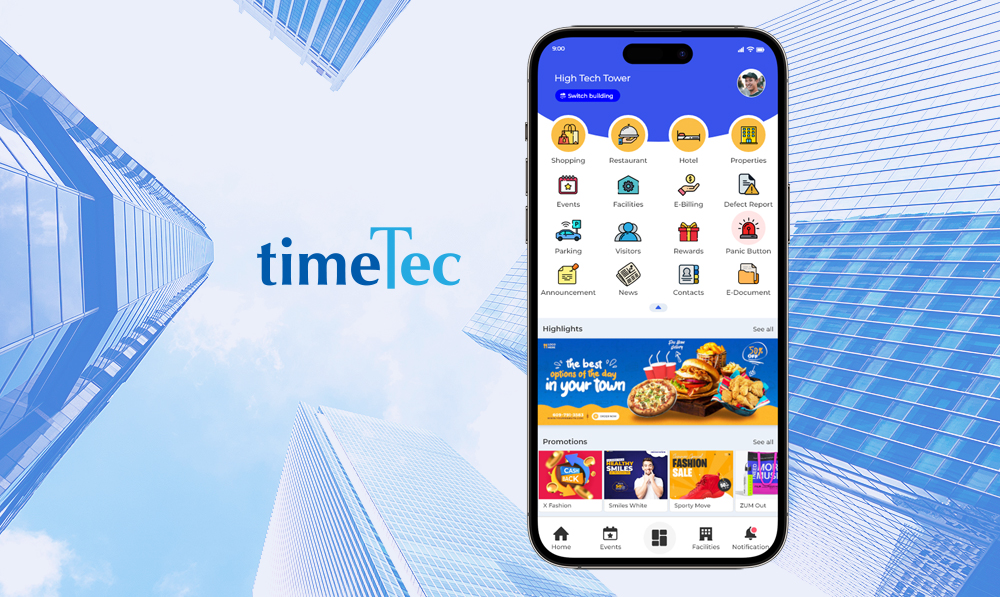The popularity of location-based super apps is surging as building owners and property managers discover their numerous advantages. These apps streamline communication, automate tasks, user engagement, and centralize data management, boosting operational efficiency. Additionally, the potential for generating extra revenue through targeted in-app advertising makes them even more attractive.
Developing a location-based super app specifically designed for a building, whether it’s a mixed-use complex, office tower, residential space, shopping mall, or even a special-purpose property, presents a unique set of challenges compared to its non-location-based counterparts.
Beyond the Platform: The Ecosystem Challenge

Unlike platform-based super apps like Grab, Shopee, or WeChat, which primarily connect merchants and consumers, location-based super apps create an entire ecosystem tailored to a specific location. These require interactive modules and features that seamlessly integrate with the building’s operations and cater to the needs of its users.
Interconnected Functionality: A Symphony of Features
Functionality within a location-based super app needs to work in perfect harmony. For instance, a residential super app might block users with outstanding maintenance fees from booking a gym slot. Visitor management could trigger a chain reaction of activities, including facility booking, access control activation, and even initiating payment processes. This interconnectedness fosters a user experience unlike any offered by traditional, non-location-based super apps.

Building Blocks: A Multi-Tiered Approach
The complexity of building a location-based super app hinges on the specific modules and features required for managing the building. Here’s a breakdown categorized by level:

- Level 1: Information (The Foundation)
Notifications, news, contacts, directory, e-documents, announcements, user management, and map navigation – these essential functionalities form the bedrock of any super app, location-based or otherwise.
- Level 2: Commercial (Variable Complexity)
Advertisements, promotions, product and property listings, merchant management, reward programs, and payment systems. The intricacy here depends on the building’s emphasis on near-field commerce, such as on-site shops or restaurants.
- Level 3: Activities (Highly Variable)
General Activities: Parking (casual, seasonal, valet), visitor management, access control, facility booking, event management, emergency management, surveillance monitoring, and property management accounting.
Special Activities: Modules tailored to the building’s purpose, like appointment booking within a hospital super app or course registration for a university app.
- Level 4: Maintenance (Advanced)
Asset and facility management, often integrated with a CMMS (computerized maintenance management system). A user-friendly interface allows residents or tenants to conveniently report and request repairs directly through the app.
- Level 5: Analytics (Highly Advanced)
All building activities generate valuable data for further analytics, encompassing a range from fundamental descriptive and diagnostic analytics to the more advanced prescriptive and predictive analytics. This data unveils a comprehensive view of the past, enhances present decision-making, and allows for confident navigation towards future monetization strategies.
Conclusion: Expertise Beyond Code
Developing a successful location-based super app goes beyond simply writing code. While software houses may handle basic functionalities, developing advanced features (Levels 3 & 4) often necessitates expertise specific to the building type, activities, and its daily operations in order to integrate them effectively. Furthermore, the location-based super app needs to combine the work of different professions, including UX designers, to ensure seamless interaction between these functionalities. In addition, data is king for long-term success, the Level 5 presents another significant challenge that requires data experts with strong industry knowledge to make sound decisions about the future planning and execution.
About Us
TimeTec Smart Township Ecosystem, the outcome of years of efforts by TimeTec R&D, has started from a smart workforce, people and vehicle flow as its essential modules, later on, plugged in with the smart community system for residential and commercial buildings. It deploys cloud computing, IoT, artificial intelligence, 5G and big data as its technology infrastructure, comprises more than ten cloud applications, meticulously designed, work perfectly in a standalone or in an integrated environment, to deliver greater automation and efficiency, eventually achieving the comfort of city living.
The ecosystem covers daily home-life and work-life activities such as work-from-home clocking in the new norm, face recognition in the office, cashless and touchless car parking, access control for doors, turnstiles and elevators, tenant management, facility booking, visitor management, guard patrolling and surveillance, smart home and smart office automation and security, property accounting billing and payment, facility maintenance, a community near field commerce, and many more. All the scenarios are taken care of in TimeTec Ecosystem, suitable for office towers, government buildings, shopping malls, hospitals, schools, residential buildings and etc., to ease the journey of digital transformation. With TimeTec Smart Township Ecosystem, we are championing the 21st century’s lifestyle.
03-8070 9933 | Email | www.timeteccloud.com | Interest Form
